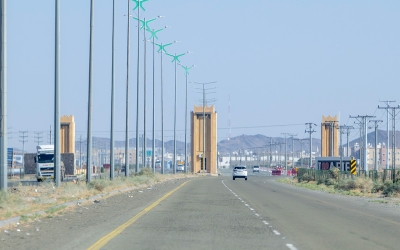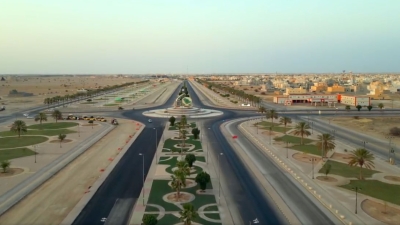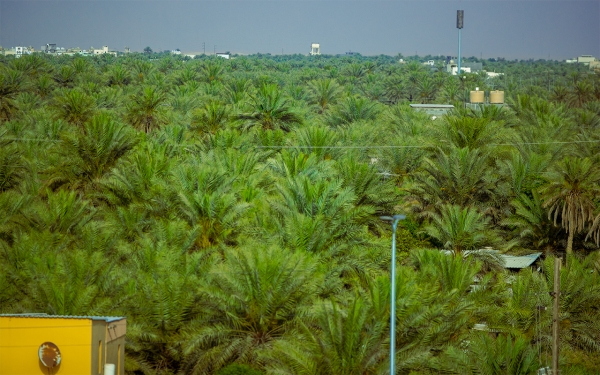
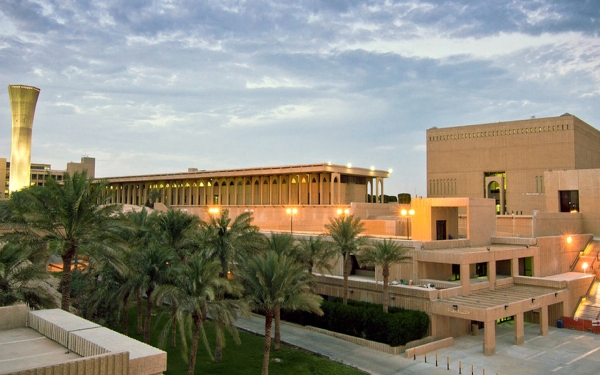
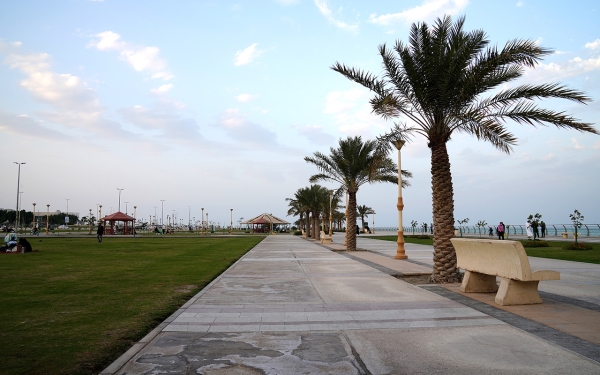
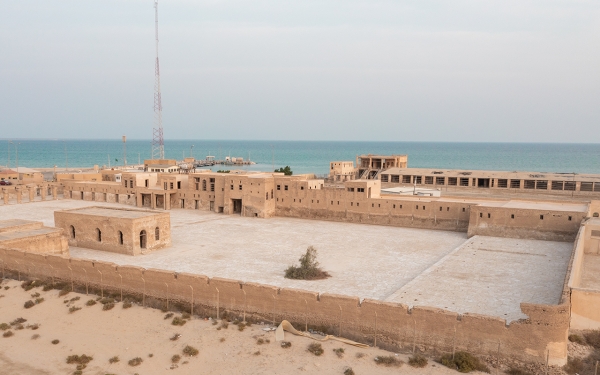
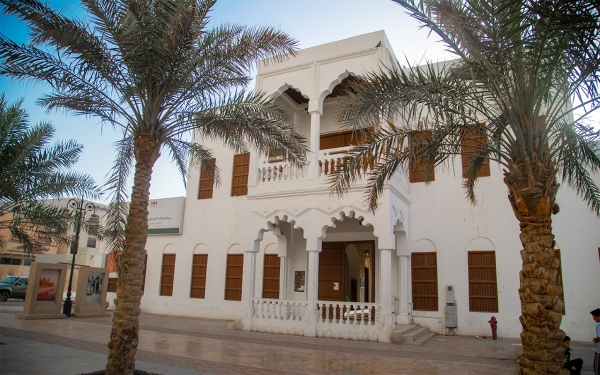
The Eastern Province (romanized: al-Mintaqah ash-Sharqīyah) is the largest province in the Kingdom of Saudi Arabia in terms of space. It contains twelve governorates and is named the Eastern Province given its location within Saudi Arabia.
History of the Eastern Province
This province is one of the oldest human settlements inhabited in the Arabian Peninsula and has witnessed various historical periods under names like: al-Jarhaa, Hajr, and Bahrain region. It was inhabited by Amalek, Canaanites, Phoenicians, and Thamud. This is due to the abundance of springs and water sources, fertile lands, and its location between the outer world and the inner regions of the Arabian Peninsula, which made it a crossing for caravans and a commercial business center.
The Eastern Province is a modern name for a place with ancient roots. Various states have existed on its fragmented territories for over five thousand years BC. It appeared under its current name for the first time in 1992, with Saudi Arabia’s announcement of the implementation of the Law of Provinces, dividing Saudi Arabia into thirteen administrative provinces.
Eastern Province area and borders
The area of the Eastern Province is 540,000 km², representing 27.6 percent of Saudi Arabia's area. It is a desert plain, stretching from the Arabian Gulf to the Dahna desert. It spans about 1,200 km², from the Kuwaiti borders in the north to the Empty Quarter in the south, which is the largest continuous sand desert in the world, occupying the southern part of the country. The Eastern Province shares borders with Kuwait and Iraq to the north, Qatar and Bahrain to the east, and the United Arab Emirates and Oman to the south. The Eastern Province is located between latitude 29.3°N and latitude 23.3°S. It is bordered by longitude 50°E and longitude 54°W.
Governorates and cities of the Eastern Province
The Eastern Province consists of ten governorates. Five of them are of category A, which are: Al-Ahsa, Hafar al-Batin, al-Jubail, al-Qatif, and al-Khobar. In addition to five governorates of category B: Al-Khafji, Ras Tanura, Abqaiq, al-Nuayriyah, and Qaryat al-Ulya. The province has 107 centers, of which sixty-nine are category A, and thirty-eight are category B. Dammam is its capital, and al-Ahsa governorate constitutes the largest part of its area. Some of its main cities are: Dhahran, al-Khobar, al-Qatif, Hofuf, Mubarraz, al-Ayoun, Abqaiq, Ras Tanura, al-Jubail, al-Khafji, Hafar al-Batin, and al-Nuayriyah.
Climate of the Eastern Province
The Eastern Province generally experiences a moderate climate. The weather is typically clear and the air is refreshing. However, between the months of May and August, the temperature can reach up to forty-six degrees Celsius, making the weather hot and humid. In the winter season, which falls between November and February, temperatures can sometimes drop to eight degrees Celsius, with some rainfalls during this period, though it's rarely heavy. The Eastern Province is famous for its caves with constant temperatures throughout the year.
Topography of the Eastern Province
The Eastern Province is among the most diverse areas in Saudi Arabia in terms of wildlife. The geographic location of the province and its vast expanses combine desert areas, coastal areas, and watercourses.
It is one of the areas in Saudi Arabia that includes habitable islands populated by residents, similar to the Jazan Province in the south of Saudi Arabia, such as Tarout Island and Jannah Island. The largest of these is Abu Ali Island, which covers an area of 59.3 km².
Population of the Eastern Province
The Eastern Province is the third most populated province in Saudi Arabia and is the most stable in terms of population growth rates. It has consistently represented 14 percent of Saudi Arabia's population since 1999. As per the 2022 census, the province has a population of 5,125,254 people. It is among the regions in Saudi Arabia with the highest youth population, with a percentage of 15 percent. Over half of the province's inhabitants are Saudis, accounting for 57.6% of the total population, with 51.4 percent of them concentrated in the cities of Dammam and al-Ahsa. Despite this, it does not have a high population density. Given its vast area of 540,000 km², every nine inhabitants live in one km² of its land. According to World Development Indicators, the Eastern Province records high human development rates in Saudi Arabia. The average individual income there is SAR16,605, which is the highest average individual income among the provinces of Saudi Arabia. Each resident in the Eastern Province can have 378 l of water daily.
Tourism in the Eastern Province
The Eastern Province is one of the tourist areas in Saudi Arabia. It is served by three international airports: King Fahd International Airport, al-Ahsa International Airport, and al-Qaisumah International Airport in Hafar al-Batin. However, 89 percent of the visitors prefer to arrive by road, which can be attributed to the diversity of urban areas along its borders and the ease of access to them. It is also connected to the capital, Riyadh, by a railway line that starts from Dammam.
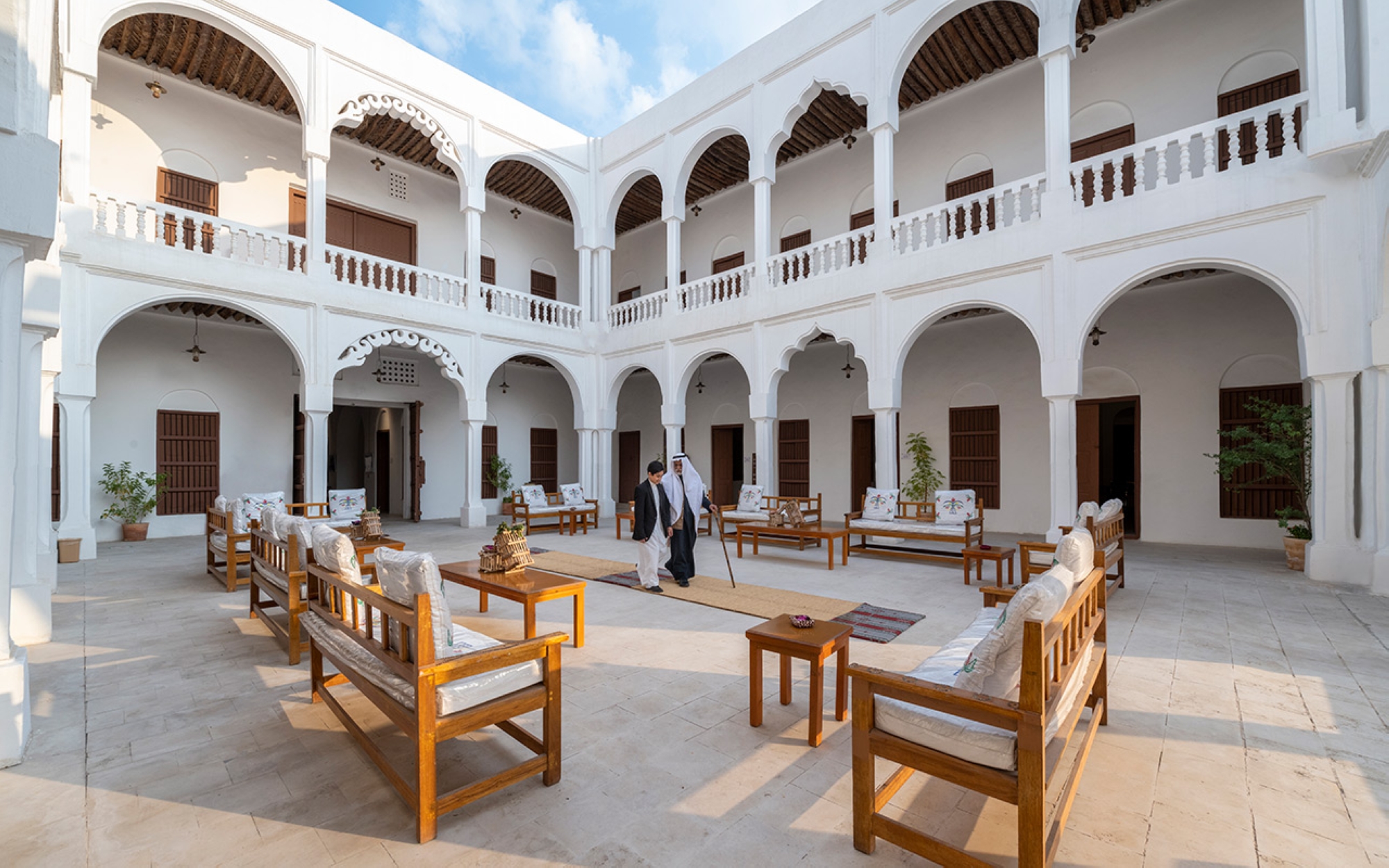
Education in the Eastern Province
Public education
The journey of formal education in the Eastern Province began in 1941 with the inauguration of the Princes' School in the city of al-Hofuf in al-Ahsa, among whose students were those who later assumed prominent positions in the country.
Following the opening of the Princes' School, several schools were established in the Eastern Province. They were affiliated with the Directorate of General Knowledge, which was established by an order from King Abdulaziz, may Allah have mercy on him, in 1926. It transformed into the Ministry of Knowledge (currently the Ministry of Education) in 1954. With the development and modernization processes of administrative agencies in the provinces, the General Directorate of Education in the Eastern Province was established, which assumed direct supervision of the implementation of educational policies, plans, and programs and followed up on their progress.
According to statistics issued by the Ministry of Education in 2022, 567,213 male and female students are studying in the Eastern Province, distributed over 2,881 primary, intermediate, and secondary schools. This includes public education, private education, Quran memorization, day schools, adult education, government and private schools, international and foreign schools, and scientific institutes. As for the General Directorate of Education in al-Ahsa Governorate, it supervises 1,354 schools with 244,570 male and female students. The Directorate of Education in Hafar al-Batin oversees 735 schools with 119,569 male and female students.
Literary clubs in the Eastern Province
The Eastern Province is witnessing an active literary and cultural movement. This activity is reflected in the vibrancy of the literary clubs in the province, which attract male and female writers. In the province, there are two literary clubs: The Eastern Province Literary Club, headquartered in Dammam, and al-Ahsa Literary Club, based in al-Hofuf.
The Eastern Province Literary Club is one of the cultural literary clubs in Saudi Arabia, which specifically focuses on the realm of literature and writers, as well as culture and its pioneers in general. It was established in 1989, and is located in the Eastern Province. The Ministry of Culture supervises it.
The Eastern Province Literary Club works towards its goals, which are to encourage and spread culture and literature in the local community. This is achieved through a range of events and activities that the club organizes at its headquarters or other locations in the governorates affiliated with the Province. The aim is to reach those interested in this field and enhance, develop, and foster their skills and capabilities.
The Club's activities include printing literary, creative, and intellectual works, conducting educational courses, and preparing storytelling and poetry events. Also included are lectures and seminars in literature, culture, and intellectual seminars.
Through offering books for viewing and borrowing, the Eastern Province Literary Club library serves students at schools, universities, and postgraduate in master's and doctoral degrees.
The club organizes some cultural competitions that offer monetary prizes. For instance, it organized the first Darin Cultural Forum in the year 2011 which revolved around discussing cultural magazines in the Arabian Gulf. Moreover, the club prepares honor ceremonies for certain cultural and literary figures both within the Eastern Province and beyond.
Several committees within the Eastern Province Literary Club are responsible for following up with and supporting its cultural activities, including the Publications and Publishing Committee, the Translation Committee, and the Platform Activity Committee, as well as the Film Committee, the Women's Committee, and the Forum Committee which is concerned with youth literature.
Al-Ahsa Literary Club was established in 2007 and it is under the supervision of the Ministry of Culture. The club aims to promote literature, creativity, and culture, and to spread cultural and national awareness. It also seeks to strengthen literary ties among writers, cooperate with relevant governmental and private entities to achieve common goals, and encourage and nurture young literary talents. Moreover, the club works on preserving the artistic, intellectual, and material rights of writers, representing them in front of relevant entities concerning the club's specialties.
The club's activities in al-Ahsa include hosting literary and cultural lectures, poetic evenings, intellectual seminars, and printing books and literary works. The club publishes al-Mashqar and Jawathi magazines. It is also keen on organizing courses and training workshops for the youth. Additionally, the club hosts the annual Jawathi cultural forum. During this event, the forum honors a significant number of literary and cultural figures in the province. The club has printed a number of books, including: Documents of al-Ahsa in the Ottoman Archive by Suhail Sabban, the Register of Letters: Readings in Saudi Literature by Sahmi al-Hajri, and the Dictionary of Contemporary al-Ahsa Poets.
Infrastructure of the Eastern Province
Sharqia Development Authority:
The Sharqia Development Authority (SDA) is the entity responsible for formulating general policies for the development and growth of the Eastern Province in Saudi Arabia. Its responsibilities encompass preparing plans, studies, comprehensive strategic layouts for the province, and its execution programs. In addition, it oversees and carries out projects in coordination with the province's council and municipality.
On May 23, 2018, the Council of Ministers issued a decision to regulate the province and city development authorities. This decision applies to six development authorities, in addition to any authority established in the future unless its establishment tool indicates otherwise. On December 10, 2019, SDA began its institutional building operations.
SDA manages its operations from its main headquarters in the city of Dammam. It has a board of directors that is the authority responsible for managing the affairs and operations of the authority. The board has several powers, including approving the investment of the authority's funds to achieve its objectives, and establishing companies, participating in their establishment, or entering them to implement the projects determined by the authority.
SDA has several roles and functions, most notably: prioritizing the implementation of programs and projects within the province in line with development plans; reviewing development plans, programs, and projects related to the authority role; proposing the dispossession of certain real estate properties for the development of the province in coordination with the province's municipality; reviewing and approving land division schemes; developing the programs needed for the private sector's participation in the implementation of projects; in addition to establishing an urban database and information systems.
The SDA works to unify the developmental decision to ensure balanced development and achieve comprehensive development goals. This is done through an operational model that relies on studies, policies, coordination, alignment, comprehensive planning, support, execution, performance management, and monitoring.
In designing its identity, the authority adopted the symbolism of the place that clarifies its role in achieving comprehensive development objectives. The logo includes the administrative division of the province, repeated sixteen times, and at its center is the national symbol of Saudi Arabia, represented by the two swords and the palm tree.
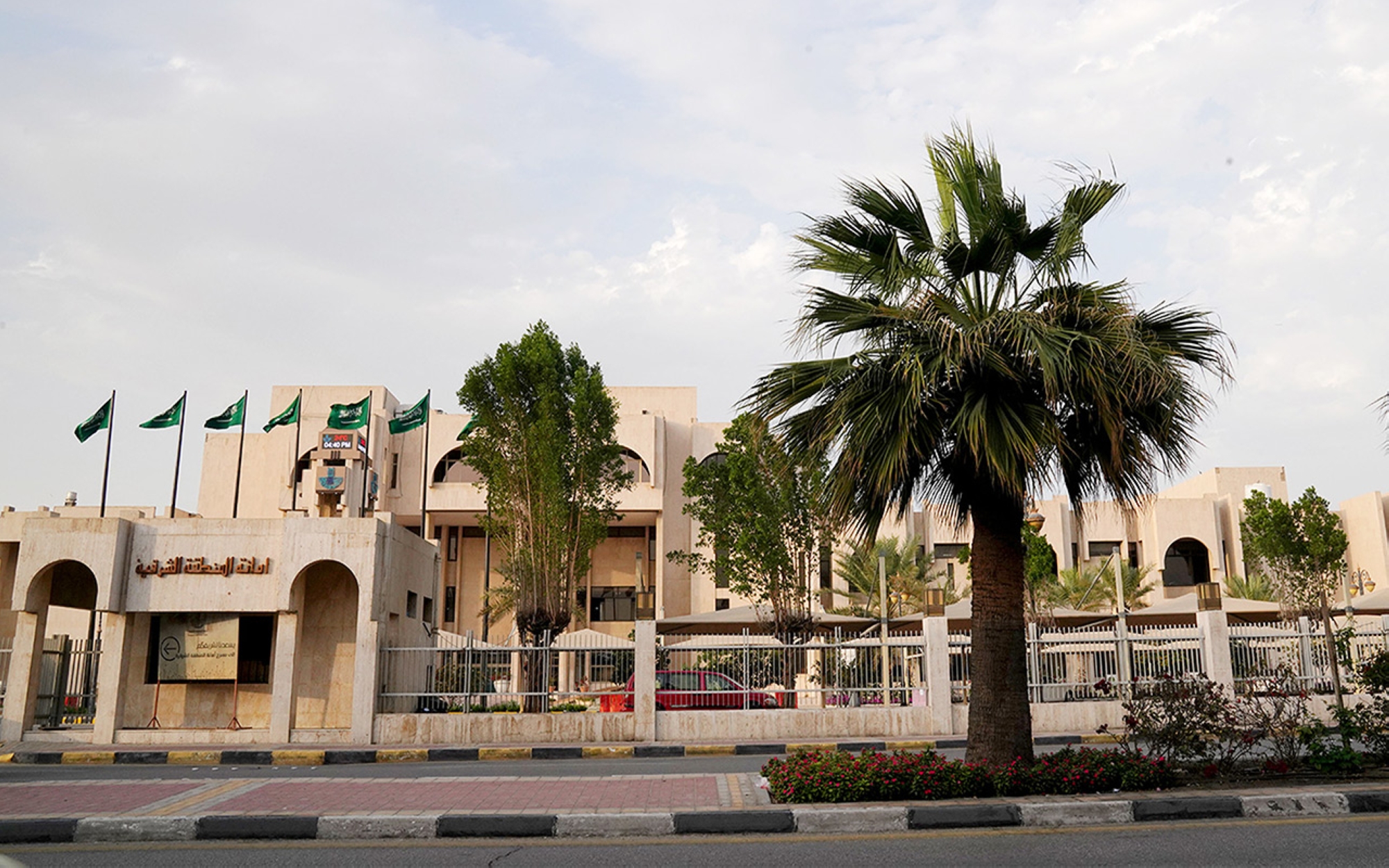
Eastern Province Municipality
The Eastern Province Municipality is one of seventeen municipalities spread across the thirteen provinces of Saudi Arabia. It is concerned with the urban development of the Eastern Province and coordinates with governmental entities to prepare structural plans for the cities, provinces, and centers in the province. Its responsibilities include providing municipal services to citizens and residents.
On August 21, 2005, the Ministry of Municipal and Rural Affairs (currently the Ministry of Municipalities and Housing) issued several decisions, which included: naming the province's municipalities, linking the municipalities and rural communities, and abolishing the general directorates of municipal and rural affairs. This was based on the Municipalities and Villages Law issued on February 25, 1977, and a Council of Ministers decision issued on October 13, 2003. The name was changed to the Eastern Province Municipality, and the municipalities and rural communities in the province were linked to the mayor.
According to the municipal terms specific to the ministry, a municipality is defined as a service entity with a legal personality and financial and administrative independence. It is headed by an official named mayor. The municipality undertakes the implementation of the tasks assigned to it and those in its terms of reference decisions.
The Eastern Province Municipality administratively falls under the Ministry of Municipalities and Housing, with its headquarters located in the city of Dammam. It's situated approximately 4.9 km away from the Emirate of the Province's headquarters and oversees five municipalities: Dhahran Municipality, East Dammam Municipality, Central Dammam Municipality, West Dammam Municipality, and al-Khobar Municipality.
On December 17, 2020, the founding council of the Eastern Province Municipality Company held its first meeting. The company undertakes several tasks, the most prominent of which include: achieving urban balance in the city, developing the municipality's lands and informal settlements, stimulating the private sector's contribution to the GDP, and improving the quality of municipal services according to the province's development strategies.
The Eastern Province Municipality carries out several tasks within its scope, including: paving roads and streets, implementing and maintaining parks and gardens, treating waterlogged areas and water collection points, executing and maintaining flood drainage projects on roads and streets, implementing public slaughterhouse projects, executing and maintaining public markets and designated markets, executing and maintaining aesthetic monument projects, preparing and equipping waste burial sites, distributing waste containers, supervising the issuance of various professional licenses, monitoring bakeries, factories, and shops to verify product suitability, cleaning streets, squares, parks, slaughterhouses, public places, and other tasks.
The regulations pertaining to health, municipal, technical, and general categories represent the main legal foundations that the municipalities operate by, in accordance with the provisions of the Ministry of Municipal and Rural Affairs and Housing.
The Balady Platform serves as the electronic arm for the Ministry of Municipalities and Housing, in addition to most of the municipalities of provinces. Through this platform, citizens and residents can issue all required licenses for various commercial activities, construction and excavation permits, group housing, land services, health certificates, and more.
The Eastern Province Municipality has set strategic goals for itself, mainly: achieve effective communication, excel in service delivery, implement best global practices and standards, innovate in service development, address critical issues, undergo digital transformation, apply community communication strategies, develop the informational reference, and enhance the efficiency of financial resource management.
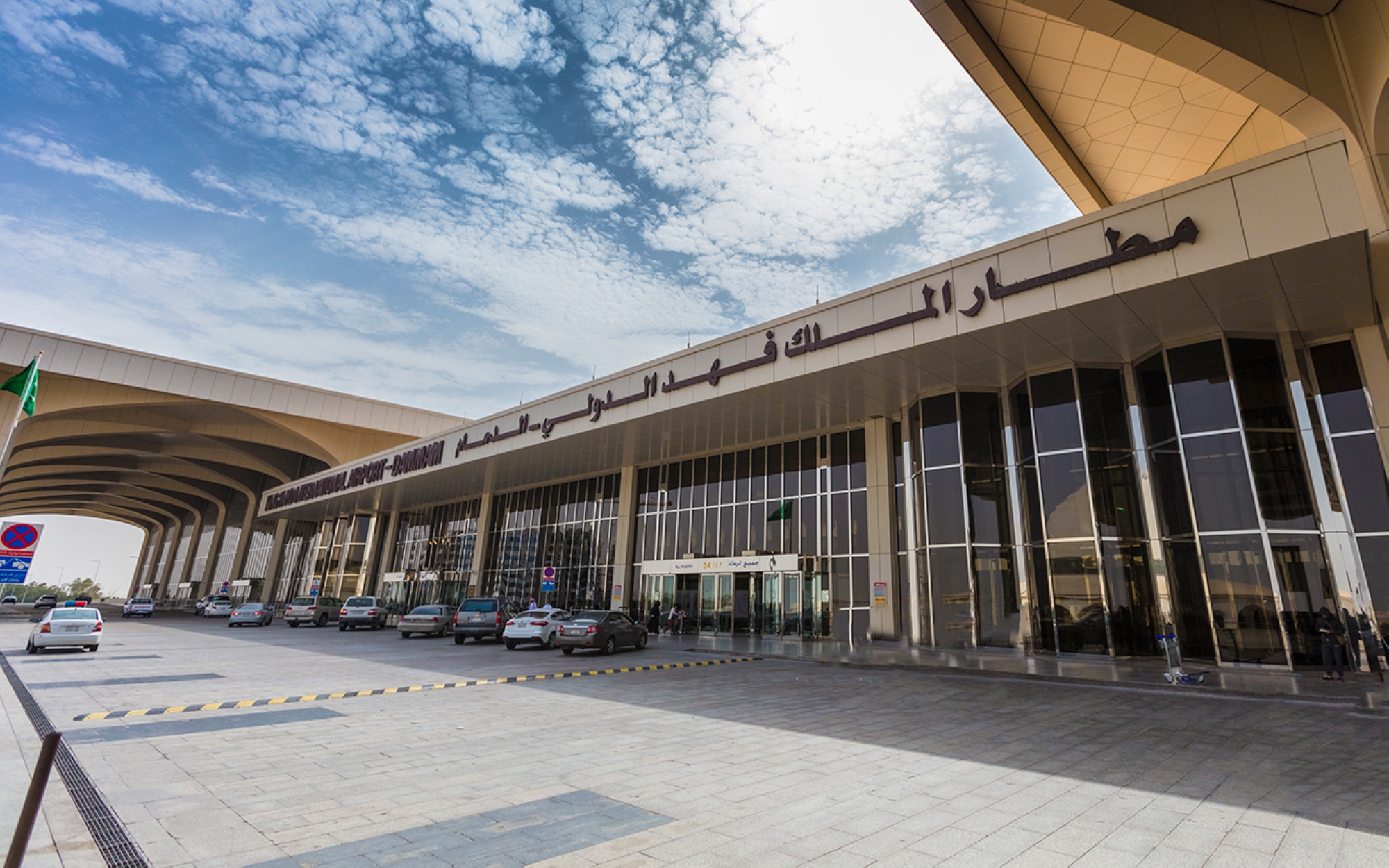
Airports in the Eastern Province
The Eastern Province witnesses active travel movement due to its dense population and significant industrial and commercial activities. The province hosts three international airports: King Fahd International Airport in Dammam, al-Ahsa International Airport, and al-Qaisumah Airport in Hafar al-Batin.
King Fahd International Airport in Dammam
King Fahd International Airport in Dammam was inaugurated in 1999. It is the third-largest international airport in Saudi Arabia in terms of passenger numbers and serves as the gateway to the Eastern Province. The Dammam Airports Company has been managing and operating the airport since 2017.
King Fahd International Airport in Dammam is served by thirty-seven local and international airlines, connects to forty-three destinations, and caters to ten million travelers annually, according to data released by the airport in 2023.
The airport terminal consists of five floors: the mezzanine floor, departure floor, boarding floor, arrival floor, and services floor. The mezzanine floor features a balcony designed for visitors to enjoy watching aircraft takeoffs and landings. It also houses restrooms, a restaurant, and offices for the Dammam Airports Company (DACO). The design of the airport blends modernity with Islamic architectural elements. It covers an area of 776 km², and is an international airport with one terminal.
The airport houses two parallel runways, each measuring four thousand m (13,123 ft) in length. There are also parallel taxiways for the runways and a connecting taxiway to link the two runways. A distance of 2,146 m (7,041 ft) is maintained between the runways to facilitate simultaneous takeoffs and landings. An area in the airport's precinct is reserved for the construction of a third parallel taxiway.
There's a road along the western side of the central terminal for Ground Support Equipment (GSE), designed to allow equipment to access the aircraft and facilitate the movement of luggage carriers from the aircraft to baggage areas.
The control tower at King Fahd International Airport in Dammam stands at a height of 85.5 m (281 ft), equivalent to a thirty-story building. This height allows for a clear view of all airport operations areas. Its total floor area is 7,960 m² (85,700 sq ft), and Saudi Air Navigation Services (SANS) manages the tower's operations.
Al-Ahsa International Airport
Al-Ahsa International Airport is located in the city of al-Hofuf. It is an international airport serving the Eastern Province, in addition to King Fahd International Airport. Established in 1985, its passenger capacity is up to four hundred thousand passengers. The airport contains one terminal, with the total built-up area of the airport being 477 km².
In 2023, a project was announced to develop and expand al-Ahsa International Airport. The initial phase aims to increase its capacity to one million passengers annually, while the second phase targets four million passengers. This is to enhance operational performance, improve the passenger experience, update the infrastructure, and provide a global investment environment.
The project includes the construction of two international lounges, the development and enhancement of the current domestic flight lounges, and the building of long-term parking spaces that can accommodate 437 vehicles, in addition to the current parking which has a capacity of seven hundred vehicles. Moreover, there's a plan to refurbish the service line parallel to the airport lounges, which is 1.7 km long, and to construct areas for ground equipment. The architectural designs were inspired by the heritage of al-Ahsa province, which encompasses the airport's external facades and interior designs.
The project also encompasses the construction of two international lounges over a total area of 3,400 m² and the refurbishment and enhancement of the current domestic flight lounges to align with the new international ones, aiming to provide a unified identity for the airport. This also includes an increase in operational capacity for the check-in counters, the development of the baggage conveyor system, and technological infrastructure upgrades.
Al-Qaisumah International Airport in Hafar al-Batin
Al-Qaisumah International Airport in Hafar al-Batin was established in 1962. In 2022, the airport inaugurated its expansion, which included the interior lounges and the equipment provided as part of the expansion, the service area, auxiliary buildings, check-in platforms, and passport platforms. The project involves increasing the space of both the domestic and international departure lounges by 238 percent, making the total area 2,300 m². The number of passengers waiting seats was also increased by 180 percent, and a joint arrival lounge was established for both international and domestic flights, covering an area of 1,600 m². The airport's capacity was increased to 367 percent annually, offering its services to more than seven hundred thousand passengers in one year. Additionally, baggage belts were replaced, the efficiency of air navigation devices was enhanced, and commercial areas and government offices were expanded.
Ports of the Eastern Province
The Eastern Province coast houses six ports overseen by the Saudi Ports Authority and serve as maritime gateways and outlets for Saudi Arabia to the outside world. These ports are distributed among the cities of Dammam, Jubail, Ras Tanura, al-Khafji, and Ras al-Khair. Three of them are commercial ports, and the rest are oil and industrial ports. They are located near the most important oil and industrial cities in the province that contains eleven oil fields for crude oil production, which make up 68 percent of Saudi Arabia's exports.
King Abdulaziz Port in Dammam
King Abdulaziz Port in Dammam is the main port for Saudi Arabia on the Arabian Gulf. It is connected to the dry port in Riyadh by a railway. Goods from all over the world pass through it to both the eastern and central provinces. The port was established by order of King Abdulaziz Bin Abdulrahman Al Saud. Aramco was entrusted with its construction to cater to the requirements of the oil industry. It later underwent successive expansions. The new expansion was inaugurated in 1961 and was named King Abdulaziz Port.
The total area of King Abdulaziz Port is nineteen km², and it has forty-three fully serviced and equipped berths capable of accommodating large ships. The port offers operational services and is equipped with handling equipment that enables it to manage various types of goods. It also encompasses support stations for containers and general cargo. The port contains three terminals, with a total capacity reaching 105 million t. The port also operates a ship repair facility that includes two floating docks for ships that can accommodate vessels up to 215 m in length. Additionally, the port houses several other support stations: a station for refrigerated goods, two cement stations one for exporting black cement and clinker, and the other for white cement, a station for bulk grains, a station for handling raw iron, and a marine parts manufacturing area along with oil and gas platforms.
King Fahd Industrial Port in Jubail
King Fahd Industrial Port in Jubail was established in 1982 to serve the industrial complex in Jubail Industrial City. It was designed for importing raw materials required by local industries and exporting industrial products, such as petrochemicals, refined oil products, chemical fertilizers, and sulfur. This came as a result of Saudi Arabia's transformation from being merely an exporter of raw materials to a manufacturer of gas and oil products. King Fahad Industrial Port in Jubail serves as the main outlet for petrochemical products produced in Jubail Industrial City. It stands out because of its strategic location and proximity to factories. The port includes thirty-four berths, spans an area of 7.2 km², houses five terminals, and has a capacity that reaches up to seventy million t.
Jubail Commercial Port
Jubail Commercial Port acts as a supporting port for King Abdulaziz Port in Dammam, bolstering trade movements and serving as a gateway for Saudi Arabia's exports and imports to global markets. The port was established in 1974. Its location was chosen due to the depth of adjacent waters, its approximate eighty km distance to the north of Dammam city, and its proximity to the main Eastern complex for industrial products and petrochemical factory products in Jubail Industrial City. This contributes to reduced costs of imported and exported materials and enhances Saudi Arabia's competitive capability.
Jubail Commercial Port boasts a fleet of maritime vessels, including tugboats, pilot boats, and mooring boats, sufficiently numbered to facilitate maneuvering operations, enabling vessels to dock and depart at any time under various weather conditions without delay. The port features sixteen berths, storage yards, and a dedicated warehouse for hazardous materials. Spanning an area of 4.8 km², it has two terminals, with a handling capacity reaching thirty-six million t.
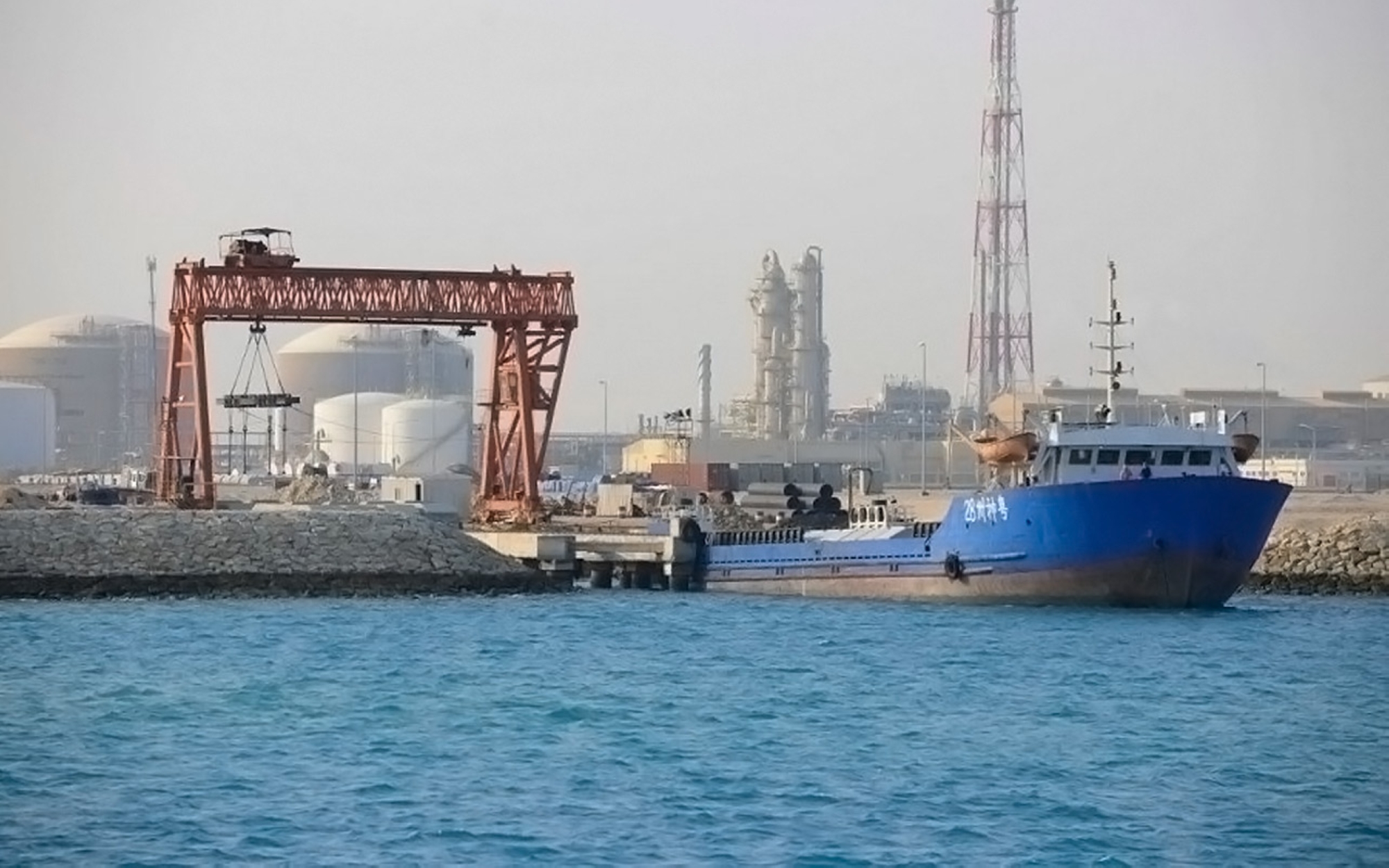
Ras al-Khair Port
The Ras al-Khair Port is considered one of the vital arteries that support the crucial programs and projects undertaken by both the public and private sectors in the industrial city of Ras al-Khair in the Eastern Province. Inaugurated in 2016, it stands as Saudi Arabia's most recent industrial port. Its significance stems from its location in a new, diverse production industrial area with a promising future in the national economy. The port is uniquely linked to mining operations through a railway line, facilitating the export of company products to global markets.
Serving over one hundred industrial projects in Ras al-Khair City. The port comprises fourteen berths and is equipped with the necessary machinery, tools, and devices for handling both general and bulk cargo. It's prepared for rapid and positive responsiveness to the changing conditions imposed on maritime transportation to and from Saudi Arabia. Covering an area of twenty-three km², the port has a single terminal (with four facilities) and a capacity that reaches up to thirty-five million t.
Ras Tanura Port
Ras Tanura Port is an oil port situated on the eastern coast of Saudi Arabia, north of the city of Dammam. It was inaugurated by the founder King Abdulaziz Bin Abdulrahman Al Saud in 1939. Approximately 90 percent of Saudi Arabia's hydrocarbon exports pass through this port, destined for global markets. These exports represent 20 percent of the total global consumption of hydrocarbons.
The port distinguishes itself with an operational capacity that enables it to accommodate more than two thousand giant oil tankers annually. The port ships over nine million barrels of hydrocarbons daily and can simultaneously offload sixteen ships. Its storage capacity stands at more than fifty million barrels, while its handling capacity reaches five hundred million t. The port encompasses three specialized terminals equipped with facilities and also comprises twenty-eight berths within the Arabian Gulf waters. These are divided into two areas: Ras Tanura and al Ju'aymah. The Ras Tanura area includes the southern terminal, northern terminal, artificial island, western terminal, and the services berth. Meanwhile, al-Ju'aymah area encompasses six single-point mooring buoys for crude oil loading, two berths for liquefied gas loading, and a berth for non-commercial services.
Ras Tanura Port handles a diverse range of petroleum products, such as: Light, Medium, and Heavy Arabian crude oil, Super Light Arabian crude oil, Liquefied Butane gas, Liquefied Propane gas, Jet fuel, ninety-five octane gasoline, ninety-one octane gasoline, Diesel, and several other combustibles. Its export capacity reaches 6.5 million barrels, which equates to 7 percent of the global demand for oil. The refining capacity of the Ras Tanura refinery stands at 525,000 barrels per day. The port is characterized by an oil tank farm with a capacity of thirty-three million barrels and the presence of four artificial islands, capable of loading six carriers of five hundred thousand t simultaneously.
Al-Khafji Port
Al-Khafji Port is located in al-Khafji governorate and serves as an oil port for crude oil export. The first oil shipment from this port was exported in the year 1960. The port spans an area of 14.5 km² and comprises twenty-three berths. The port is distinguished by its capacity to receive three tankers at the same time: two loading tankers and one unloading tanker. It can also receive six tankers in the waiting area, and receive thirty small pieces on its berths. The services provided by al-Khafji Port include: crude oil shipping, offloading diesel tankers, supply services, and maintenance services for the small pieces.
Industrial cities and zones in the Eastern Province
In the Eastern Province, there are eight industrial cities spread across the cities and governorates of Dammam, al-Ahsa, Hafar al-Batin, and Buqayq. These cities contain more than 1,685 factories, whether productive, existing, and under construction and establishment. The Saudi Authority for Industrial Cities and Technology Zones oversees these Cities.
First Industrial City in Dammam:
The First Industrial City in Dammam was established in 1973. It is located southeast of Dammam city, at the intersection of King Abdulaziz Road with King Fahd Road. The total area of the city is 2,440,000 m², all of which is developed. The number of factories in the city is 182 industrial and service contracts, including productive, existing, and under construction and establishment factories.
Second Industrial City in Dammam
The Second Industrial City in Dammam was established in 1978. It is located west of Dhahran city, on the Dhahran-Buqayq road, east of King Fahd Military City. The total area of the city is twenty-five million m², and it is fully developed. The number of factories in the city is 1,100 industrial and service contracts, including those that are operational, and under construction and establishment.
The Third Industrial City in Dammam
The Third Industrial City in Dammam was established in 2012. It is located south of al-Dhahran, on the eastern coastal road leading to Salwa, and is about five km away from the Half Moon beach to the south. The total area of the city is forty-eight million m², with a developed area of ten million m². The city hosts 230 industrial and service contracts, including productive, existing, and under construction and establishment.
The First Industrial City in al-Ahsa
The First Industrial City in al-Ahsa was established in 1981. It is located to the north of al-Ahsa Governorate, in al-Oyoon city, north of the Sultaniah district on the Dhahran Road. The total area of the city is 1,500,000 m², which is fully developed. The number of factories in the city amounts to 142 industrial and service contracts, including those that are operational, under construction, or in the establishment phase.
Industrial City in Hafar al-Batin
The Industrial City in Hafar al-Batin was established in 2011. It is located southeast of Hafar al-Batin Governorate, about twenty-six km from Qaisumah city to the south and near the border with Kuwait. The total area of the city is one hundred million m², while the developed area is 1.5 million m². The city houses eleven industrial and service contracts, including productive, existing, and under construction and establishment.
MODON Oasis in al-Ahsa
Oasis Cities in al-Ahsa was established in 2013. It's located in the south of al-Hofuf city, thirteen km away from al-Ahsa International Airport to the east. The total area of the oasis is two million m², with 543,431 m² developed. The oasis comprises twenty industrial and service contracts, including productive, existing, and under construction and establishment.
King Salman Energy Park (SPARK)
King Salman Energy Park (SPARK) is located forty km away from Saudi Aramco, near the city of Buqayq in the Eastern Province, adjacent to the railway line of the Gulf Cooperation Council (GCC) countries. The city spans an area of fifty million m².
Samaa Private Industrial City
Samaa Private Industrial City is located in the governorate of Buqayq, in the Eastern Province. It spans an area of 1,460,000 m² and primarily focuses on petrochemical industries. The city is managed by EmdX al Arabiya Limited Company.
Ras al-Khair Industrial City
Ras al-Khair Industrial City is dedicated to the mining industry in Saudi Arabia. It was established to attract primary industries in metals such as aluminum, phosphate, copper, zinc, iron, and industrial minerals. Additionally, it aims to attract secondary and transformational industries for these sectors, with an emphasis on supply chains related to shipbuilding and maritime industries. This is all to contribute to elevating the domestic product and exporting to global markets. The responsibility for the development and management of the city has been entrusted to the Royal Commission for Jubail and Yanbu.
Monuments in the Eastern Province
Monuments in the Eastern Province refer to the tangible remnants and legacies of ancient human civilizations in the Eastern Province of Saudi Arabia. Some of these remnants date back to over five thousand years ago, representing various civilizations and reflecting the history of settlement in the province.
Thaj Archaeological Town
Thaj Archaeological CityTown is the largest archaeological site in the east of Saudi Arabia. It is the only archaeological town on the eastern coast of the Arabian Peninsula and is one of the historical Arab kingdoms that dates back to the pre-Islamic period. Excavations in the town have revealed that Thaj was a major urban center in the last centuries BC and the first centuries CE.
Thaj Archaeological Town is located ninety-five km west of al-Jubail city. The site contains numerous inscriptions, drawings, and al-Ahsa scripts. An archaeological tomb from the Hellenistic era was also discovered there, containing gold necklaces and ornaments. Settlement in the city dates back to the Stone Age and flourished between 322 BC and the first century CE.
One of the most prominent artifacts discovered in the city is the statue of the 'Girl of Thaj', which dates back to the first century CE. The statue, made of bitumen, iron, and lead, stands at a height of forty-six cm. The statue was discovered in a tomb in 1998. This tomb dates back to the Hellenistic period when the Arabian Peninsula was connected to the Mediterranean world through major trade routes.
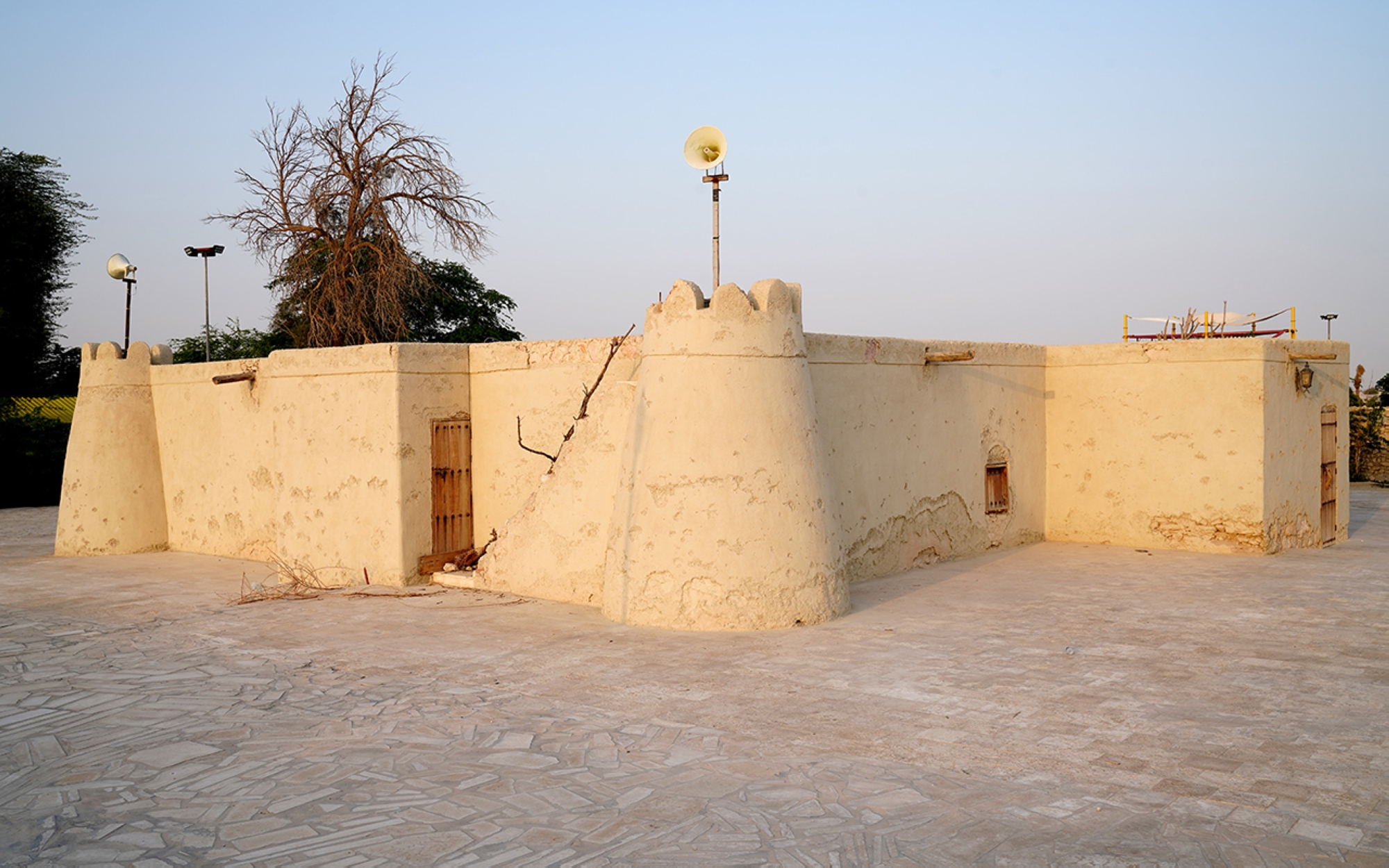
Jawatha Mosque
Jawatha Mosque, located in al-Ahsa governorate, was built at the dawn of the Islamic era, specifically in 628. It was constructed by the Banu Abdulqais and their allies, Banu Tamim and Bakr Bin Wael, who were then residing in the eastern part of the Arabian Peninsula. They built the mosque after they embraced Islam through Prophet Mohammed (PBUH). Jawatha is considered the first mosque established in the eastern part of the Arabian Peninsula and is the second mosque in Islam where the Friday prayers were held, following the Prophet's Mosque in al-Madinah al-Monawarah.
Jawatha Mosque is located about twenty km northeast of al-Hofuf city and to the north of the villages of al-Halila, al-Kalabiya, and al-Muqdam, in the plains of the eastern al-Shubah mountain. The mosque consists of three corridors, with the Qibla side centered in the direction of the Kaaba, the presence of the mihrab, and the remains of traces of the place of the minbar and the handrest. The mosque's foundations are still in place, although some have eroded over time due to events that have occurred in the Arabian Peninsula. The mosque's length is twenty arms and its width is ten arms. To the mosque's west is the Jawatha spring, and to its southwest are the remains of a graveyard believed to contain the tombs of some companions of the Prophet who were martyred during Ridda Wars.
Al-Uqair Historical Port
Al-Uqair port is the historical maritime outlet for the people of al-Ahsa and Najd. Historically, it served as the trade gateway with regions of the Arabian Peninsula, Mesopotamia, Persia, India, the Levant, Yemen, the African continent, and China. The port contains various archaeological landmarks, including the customs and passport building, the coastal harbor, the Khan building, the market, the old mosque, and the fort.
The port is located about sixty-five km east of the city of al-Hofuf in al-Ahsa governorate, on the banks of a small gulf within the waters of the Arabian Gulf. The coastline of al-Uqair extends for approximately forty-five km, starting from Ras Abu Ajeel in the north to al-Zaynat hill. Al-Uqair is surrounded by moving sand dunes from its western, northern, and southern sides. Interspersed among these dunes are saline sabkhas.
Al-Uqair port is located at a longitude of 13.50°E and a latitude of 35.93°N, roughly midway between Ras Khaleej Salwa to the south and the cities of Dhahran and al-Khobar to the north. The water on the coast is shallow and not suitable for anchoring ships. Therefore, a stone port was built there that extends into the sea by about one hundred m. Most of it was destroyed, and only a small part of it remained.
Darin Port
Darin Port, formerly known as the Port of Musk and Amber, overlooks the coast of Darin town at the southern tip of Tarout Island in the Arabian Gulf. Its history predates the Greek era, and it was historically an essential economic outlet for transferring goods from India. It served as a stop for ships and boats laden with merchandise heading into the Gulf, and through it, silk fabrics from China found their way. Darin Port is among the oldest ports in the region. Historically, the town was renowned for being a maritime port and a bustling market. It acted as a storage hub for goods, including Musk, perfumes, textiles, and spices.
Darin was a small island separated from the main Tarout Island and surrounded by shallow waters until the separating water channel was filled in 1979. One of its most prominent landmarks is the Castle of Abdulwahab al-Fihani, which stands on a mound located in the middle of the curved southern coast of Darin. This mound is considered the highest point on the city's coastal strip.
Historically, the name Darin appears in reports by soldiers of Alexander the Great regarding the Gulf region, written over three hundred years BCE. This name has been mentioned in historical books and pre-Islamic Arabic poetry, meaning its use dates back more than 1500 years.
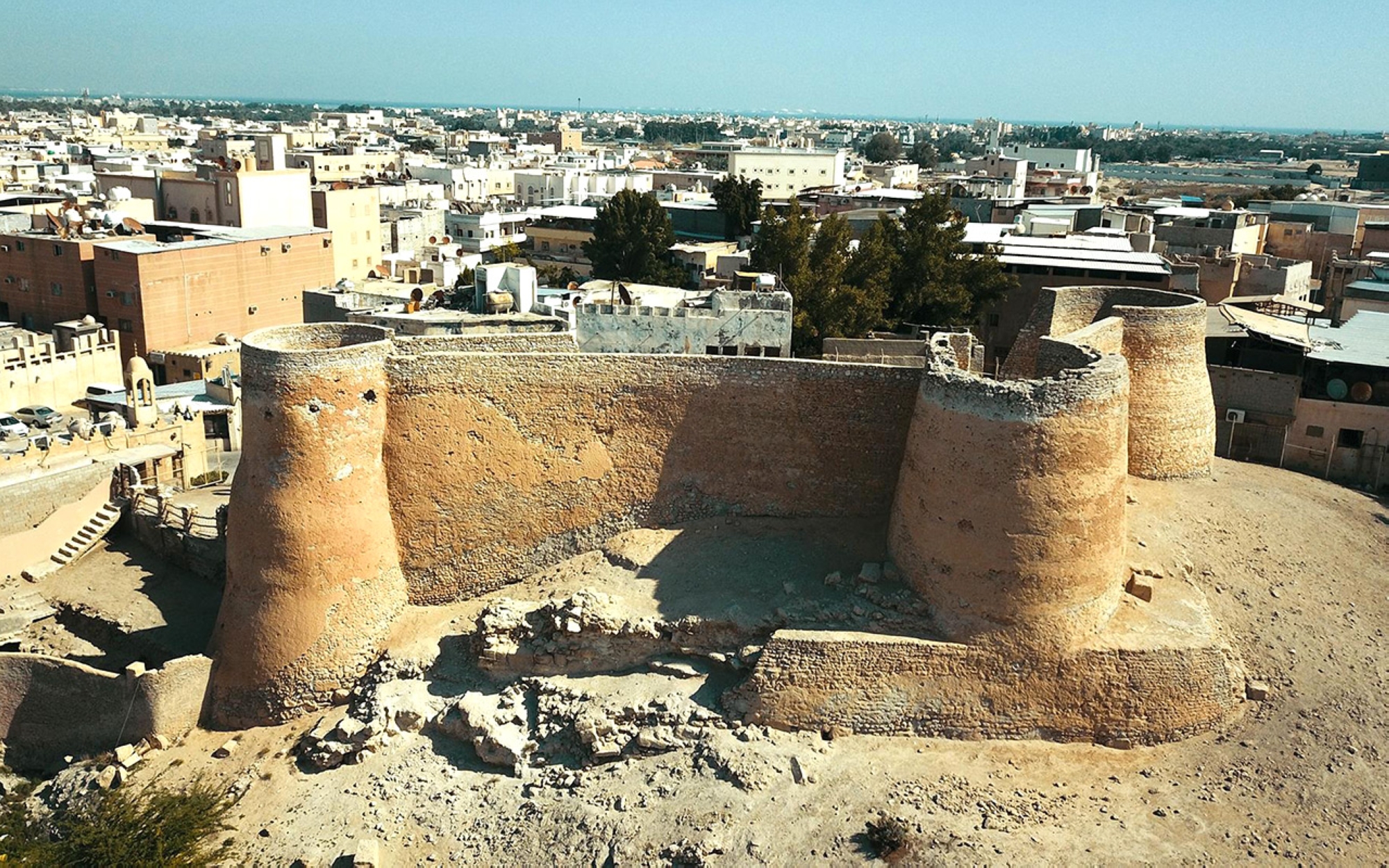
Tarout Castle
Tarout Castle, formerly known as Tarout Palace, is an ancient fortress in the Eastern Province. It stands on a hill in the center of Tarout Island. Today, its location falls within the southwest perimeter of 'al-Deira', which is the name given to the old town belonging to the historical village of Tarout, east of al-Qatif Governorate. Tarout Castle is considered one of the significant fortresses in the history of the Arabian Gulf. The hill on which the castle was built dates back to the fifth millennium BCE.
The site is dated to the Early Dynastic II or III period to the middle of the third millennium BCE. The island was one of the primary centers of the Dilmun Kingdom and played a significant role in the region's history over more than five thousand years BCE. It also had a prominent role in the commercial life of the Gulf, and Mesopotamia and the rest of the coastal region in the eastern Arabian Peninsula relied on it, and it had close relations with many civilized areas in the region. The castle consists of four towers, three of which are still standing, while the fourth collapsed during one of the historical battles. It has an oval shape that mimics the natural terrain on which it was built.
Ibrahim's Historical Palace
Ibrahim's Historic Palace, also known as Ibrahim's Castle, is located in al-Hofuf city, within al-Ahsa governorate. It was constructed in the year 1555 and underwent renovation in 1801, under Ibrahim Bin Ofaisan, to whom the name of the palace is historically attributed. The palace stands as one of the historical landmarks in al-Ahsa, covering an area of 18,200 m².
The architecture of Ibrahim's Palace combines both Islamic and modern architectural styles. The palace contains several military installations and is constructed with a modern architectural style evident in its arches, domes, and decorative elements that reflect the religious style, especially in its semi-circular arches and Islamic domes. King Abdulaziz added another style to the palace: the military style. This is evident in the large towers surrounding the palace, as well as the barracks to the east of it. The palace contains a large collection of diverse facilities that were constructed using local materials. Its walls were built from mud mixed with straw, while the roofs were constructed using palm trunks, sandalwood, and stones.
The palace rooms comprise a square-shaped building topped by a circular dome, a service wing, horse stables, officers' bedrooms, an ammunition store, a communications room, bathrooms, and several towers. The main entrance of Ibrahim's Palace is simple in design and is followed by a larger gate adorned with some designs. This leads to a broad passage that takes one into the palace, which is centered around an open space surrounded by its various facilities on the south side.
Archeological palaces in the Eastern Province
Sahoud Palace
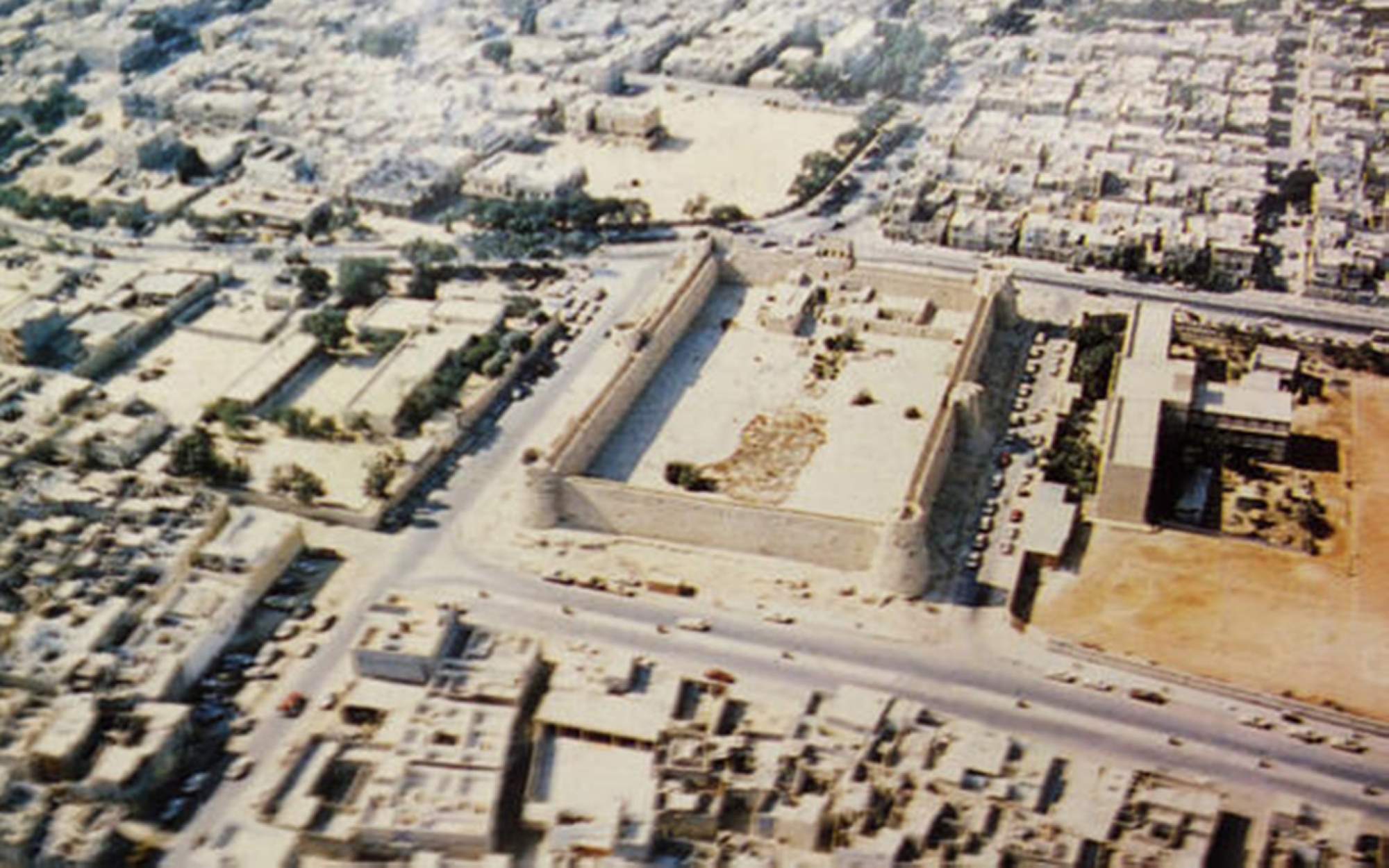
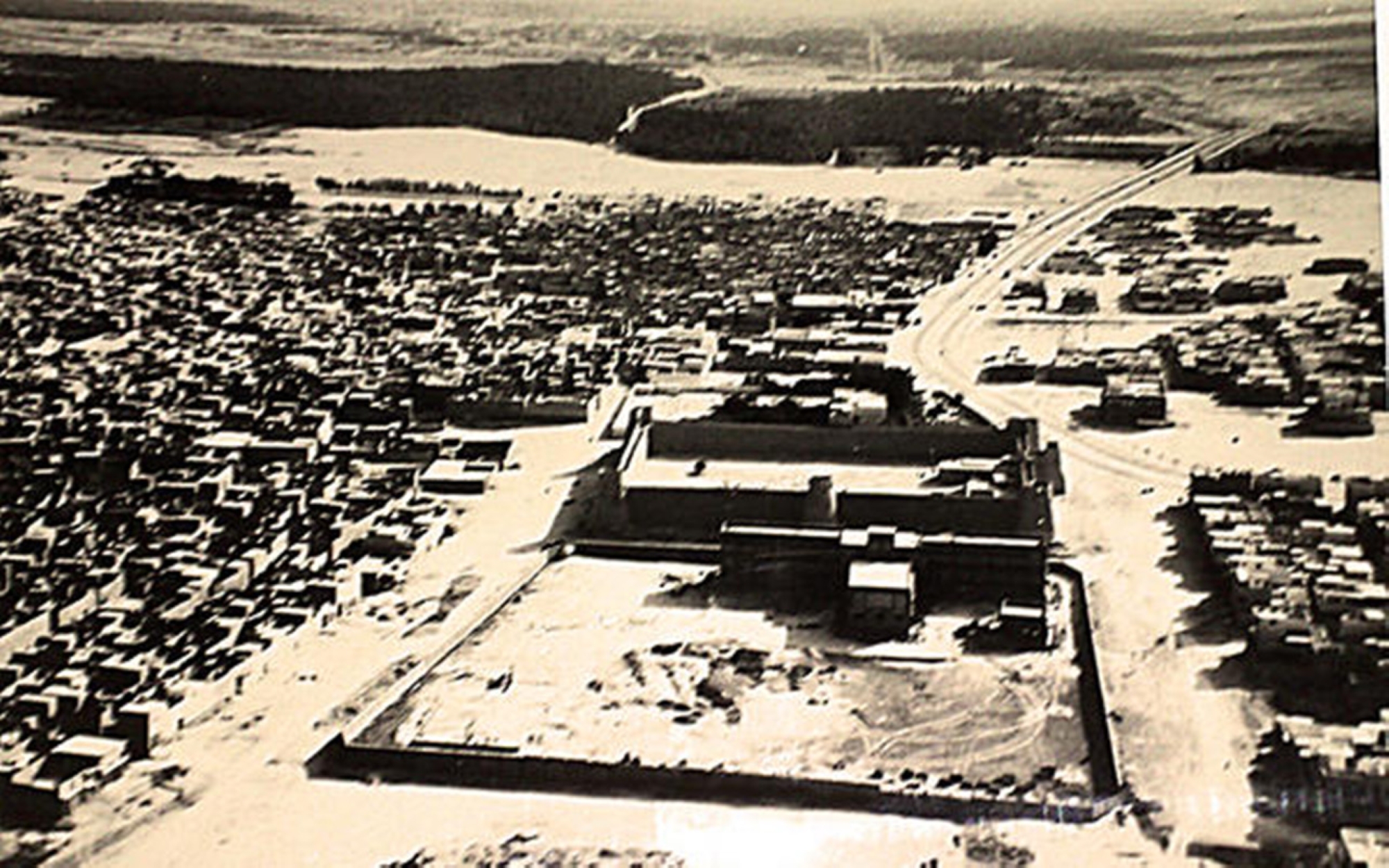
Sahoud Palace, built in 1300, is a prominent structure surrounded by tall walls and seven watchtowers. It encompasses a mosque, a well, a basement, horse stables, numerous rooms, and an open courtyard. It was named Sahoud after a large cannon that was placed within its precincts.
Additionally, the province is home to several other significant landmarks such as al-Majsa Palace, Abu Jalal Palace, al-Muhairs Palace, al-Mubarraz Palace, Khuzam Palace, the Castle Building, Abu Zahmol Tower, and al-Khan Building. The latter, built at the beginning of 1301, served as a rest stop for travelers and their animals.
Bayt al-Bayaah
It originally belonged to Abdulatif al-Mulla and is located in al-Kout neighborhood of al-Hofuf city in al-Ahsa governorate. King Abdulaziz Bin Abdulrahman Al Saud stayed in this house when he arrived in al-Ahsa on Sunday night, May 4, 1913. It was here that the people of al-Ahsa pledged their allegiance to him. The house was later converted into a museum. Spanning an area of 705 m, the house was built in 1788 by Sheikh Abdulrahman Bin Omar Bin Mohammed al-Mulla, who held the position of judge in al-Ahsa. The house contains rooms, artifacts, tools, manuscripts, and other historical items that narrate the history of the era during which it was built.
Archaeological sites in al-Jubail
Al-Jubail Governorate contains several archaeological sites, including the site of Dafi, dating back to the third century BCE, during the reign of the Kingdom of Jarha, which dominated the eastern Arabian Peninsula before Islam. The site served as a port for the Jarhaan city of Thaj, located ninety-five km west of al-Jubail. There's also the Mardumah site, which dates back to the seventh century, specifically during the Umayyad period. Settlement in this site began during this era and continued until the thirteenth century, just before the end of the Abbasid state.
The Saudi-German archaeological expedition, during its excavations at al-Dawsariya site in al-Jubail, discovered relics of civilizations that existed over seven thousand years ago. This site was a settlement for herders and fishermen. Finds at the site include remnants of fire stones, pottery, bones, and shells, all pointing to the existence of ancient settlements. The discovered animal bones from the excavations confirm that the inhabitants of al-Dawsariya bred domesticated sheep, goats, and cattle, and they also hunted deer and other wild animals.
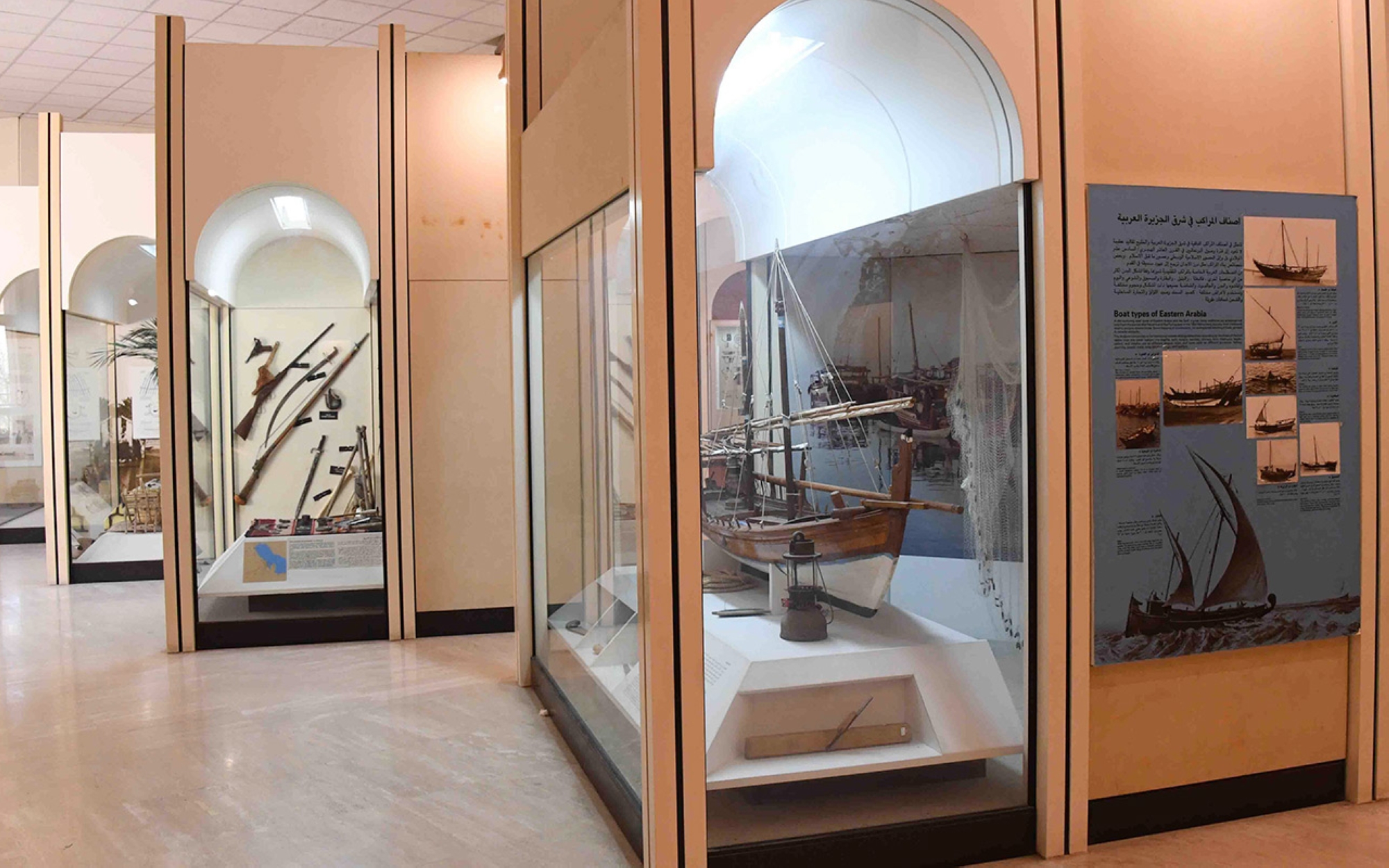
Museums of the Eastern Province
The Eastern Province of Saudi Arabia houses several museums that introduce visitors to the history and heritage of the area, showcasing a range of archaeological artifacts. Among the most prominent of these museums is the Dammam Regional Museum, which spans an area of 17,849 m, while the building's area itself is 13,500 m. It consists of five levels. Its spatial components include outdoor exhibits, seven display halls, an entrance hall and main foyer, a hall for visiting exhibits, classrooms, a section for the restoration of artifacts, a library, researchers' offices, a service area, and parking facilities.
Meanwhile, al-Ahsa Museum of Archaeology and Folk Heritage is located in the heart of al-Hofuf city, covering an area of four thousand m. It was inaugurated in 1983. The museum houses heritage artifacts from various civilizations and eras that have passed through the history of al-Ahsa. The interior design of the museum's halls mirrors the civilizations that originated or settled in the region, with diverse archaeological artifacts representing each era, ranging from the Stone Age to the Dilmun civilization, and up to the Assyrian and Babylonian periods.
The museum preserves artifacts that represent the history of al-Ahsa oasis. Over 1,400 archaeological and heritage items are housed within its corners and corridors. In addition to these artifacts, there are photographs, manuscripts, historical documents, and coins. These items narrate chapters of the region's life and history across epochs, starting from the Stone Age, which dates back to about five thousand years BCE. The hall showcases the geological timeline of the province millions of years ago, continental movements, successive geological eras, and the age of the Earth. It reveals the region's vast archaeological landmarks, highlighting its significance from both agricultural and commercial perspectives.
Local culture of the Eastern Province
Folk proverbs of the Eastern Province
The folk proverbs of the Eastern Province reflect the public's cultural awareness of the region. They emanate from a simple, tangible statement that conveys a recognized truth based on common sense and experience. Like most folk proverbs in other provinces of Saudi Arabia, those in the Eastern Province are deeply rooted in the local culture. Owing to the unique geographical location of the Eastern Province, most of its social activities are associated with the sea and agriculture, as well as other professions related to these two fields.
Proverbs represent a linguistic element that embodies the values, culture, and beliefs of a society. The subjects of these proverbs vary, ranging from the weather, and daily events to moral lessons. In the Eastern Province, there's a noticeable similarity in some folk proverbs with those found in the neighboring Gulf Cooperation Council (GCC) countries closest to the Eastern Province, such as Bahrain, Qatar, and Kuwait. For example, in Kuwait, there's a well-known proverb that translates: God, unseen by the eye, known by the mind. This proverb is also prevalent in the Eastern Province, and it means that there are matters not perceived by the senses, but reason acknowledges them.
Social themes can be considered a primary component of folk proverbs in the Eastern Province. These proverbs often revolve around social relationships and lineage. For instance, the proverb: If time doesn't obey you, then you obey it, emphasizes the idea of accepting life events and coping with them. Similarly, in a human context, the proverb, the son of Adam is weak, points to the vulnerability of humans against the trials of time, no matter how strong humans are.
Many folk proverbs originate influenced by the geographical context that distinguishes one province from another. Given the vast coastline that one sees in the eastern part of Saudi Arabia, there's a prevalence of folk proverbs that draw their words from the maritime environment. For instance, the proverb that translates, too many captains sink the ship, is linked to a rule of diving in the sea, which is one of the main social activities in the Eastern Province. This saying emphasizes the idea that an endeavor often fails when too many people attempt to lead it.
Some proverbs are also inspired by traditional markets. For example, the proverb that translates, only those who profit praise the market, indicates that a person's commendation of a particular experience often stems from their personal success in it. In a similar vein, there's the proverb that translates, If they don't value you as an asset, don't tally them as a gain. This is an economic piece of advice in personal relationships, suggesting that if someone doesn't appreciate your worth, you shouldn't value them highly in return.
Among the common proverbs in the Eastern Province are the following: A person of character won’t change his ways, meaning that individuals with deeply ingrained character traits are unlikely to change them; What ruffles my feathers doesn't even tickle his, revealing disregard for others' emotions; When a cow stands on its head, signifying the implausibility of a certain event; One ear of clay and the other of dough; is said to someone who refuses advice; When the start spells trouble, the finish remains in doubt, suggesting that early signs can predict outcomes; Idle hands that feast and slumber, implies someone of no practical use; Blood is thicker than water, but too much will drown you, meaning refraining from marrying relatives; and Open your purse, and your enemies will become your friends, indicating that generosity earns people's love.
Some of the proverbs influenced by the agricultural environment in the Eastern Province include: Spread your love and rely on your Lord, conveying the idea that people make efforts while leaving the rest to God; Dates give strength to the knees, alluding to the nutritional and health benefits of dates; The height of a palm tree and the intellect of a pebble, describing someone with a large physical stature but limited intellectual capacity. More proverbs include: Generosity comes from what you have, emphasizing a person's inability to bear responsibilities, particularly in matters of hospitality and honoring others beyond their means; and Follow the current, meaning that moving alongside the group or embracing a shared choice is favorable and wise. Proverbs regarding praising individuals include: Applying him to the wound soothes it; The worth of the cloth lies in its own fabric, suggesting that solutions to problems are often discovered within family bonds rather than strangers; and The stomach is empty while claiming to be full; describing someone pretending to be affluent when the reality is quite different.
More popular proverbs include: Like the rooster's egg, referring to something extremely rare, as roosters don't lay eggs; Ugly but bold-eyed; describing someone with undesirable traits yet is audacious and shameless; The morning holds more success, extoling the virtues of starting tasks early in the day; The early bird catches the worm, implying that those who delay in seeking sustenance or fulfilling their needs will find others ahead of them and obtaining what they seek; and Beggar yet demanding, referring to someone who, despite asking for favors from others, imposes conditions on the aid they receive.
More proverbs include: The wedding is shared by a couple, but the toil involves a multitude; illustrating scenarios where numerous individuals contribute, yet only a select few reap the rewards; Naive but pretending to be informed, describing someone who pretends to know or master something when in reality they don't; Every delay might be for the best, used to mitigate the frustration of waiting for something desired, suggesting that delays can sometimes lead to unexpected benefits; Once in a year; refers to something rare or infrequent; He is lavish with another person's fund, describing someone who is charitable but not with their own resources; Every scar teaches a lesson, emphasizes that every painful experience benefits an individual by teaching them a lesson for the future; Don't poke your nose where it doesn't belong, advising against meddling in others' affairs; Uncle of my father, scratch my back, portraying someone seeking help from a distant relative; and lastly, They even envy the poor man who dies on Friday, underscoring the extent of envy, where people might envy someone even for the smallest things, like a destitute person passing away on a Friday.
Traditional markets in the Eastern Province
The traditional markets in the Eastern Province, east of Saudi Arabia, are known for being open spaces surrounded by narrow alleys where skilled craftsmen, such as leatherworkers and carpenters, prepare goods for sale during the seasonal market days. The stalls in these traditional markets are organized based on the type of goods being sold, turning these areas into bustling commercial hubs that are distributed across distinct sections, each often named according to their geographic location or the social activity associated with that space.
There are about five traditional markets in the Eastern Province, with their artisanal activities ranging from selling local delicacies to parts of the traditional Saudi attire, especially Mishlahs, traditional weaving, and crafting traditional agricultural tools. Most of these markets are both cultural and economic hubs. They are architecturally significant heritage sites that the Ministry of Tourism seeks to develop. In 2012, the Ministry of Tourism launched a program to develop and rehabilitate traditional markets in Saudi Arabia. This initiative aimed at preserving the sustainability of these markets, enhancing them as economic, cultural, and tourist destinations.
Most traditional markets in the Eastern Province follow the Qaysariya design, which consists of shops organized around a central courtyard, surrounded by a portico where various cultural activities, traditionally associated with these markets, take place. The Qaysariya design typically has a main entrance and other subsidiary entrances. Shops can be connected on three sides with the fourth side being an independent entrance to the market.
The Eastern Province, along with Aseer Province, boasts two of its traditional markets being chosen among eight markets targeted by the Ministry of Tourism at the national level in Saudi Arabia. These markets are recognized as significant cultural, heritage, and tourist sites. They are al-Nuayriyah traditional market and the Souq al-Khamis in al-Qatif.
The Eastern Province municipality focuses on the development of these traditional markets, recognizing them as pivotal to the province's tourism economy. This is evident in projects such as the development of the traditional market in downtown Dammam.
Some of these markets host temporary events in their open spaces. An example is Ayyam Souq al-Hub Festival in Dammam city, organized by the Eastern Province municipality in 2019. Held in the squares of Souq al-Hub, it was the first thematic festival in Dammam that emulated the old traditional markets and the crafts they incorporated. The festival lasted for ten days.
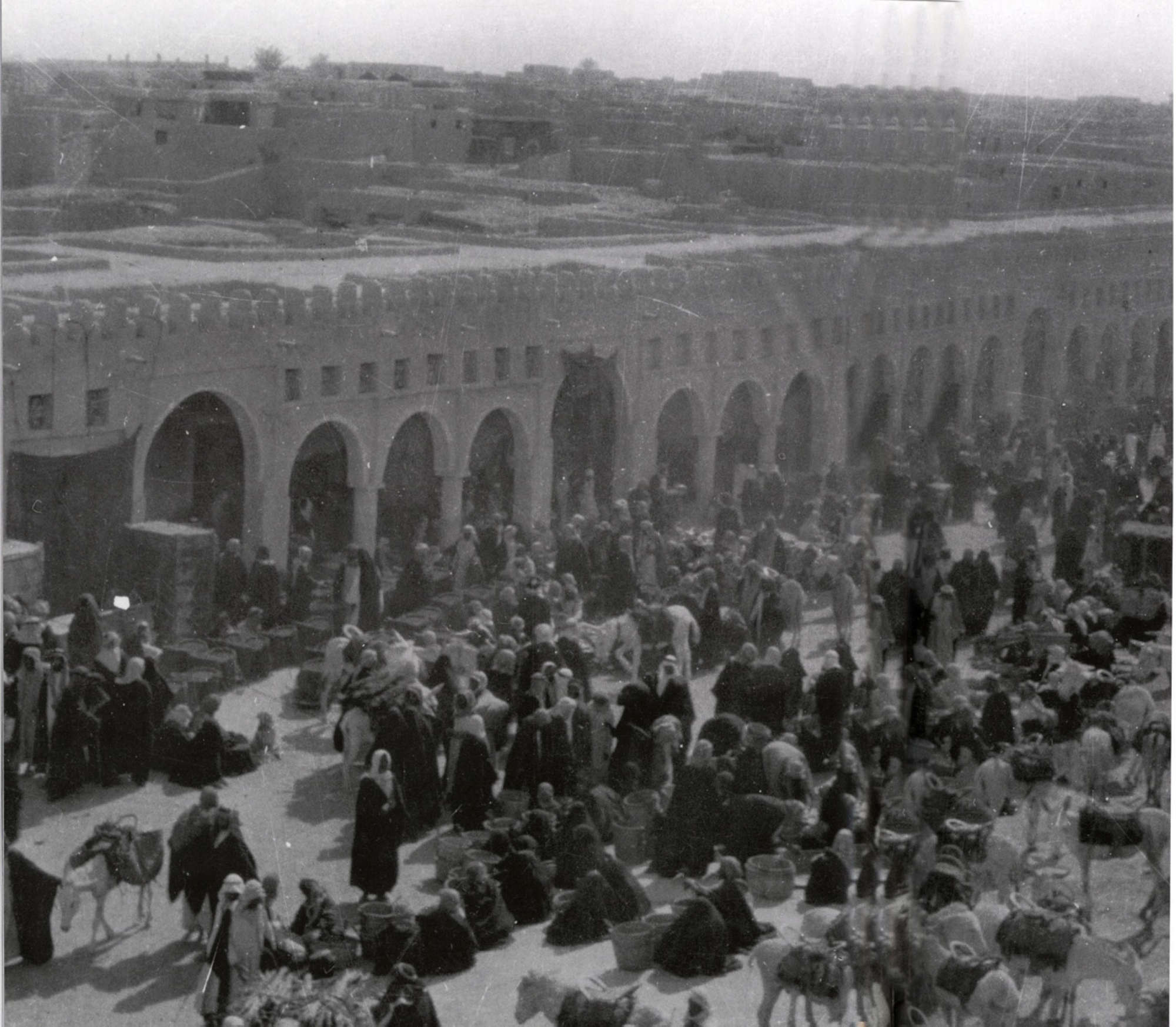
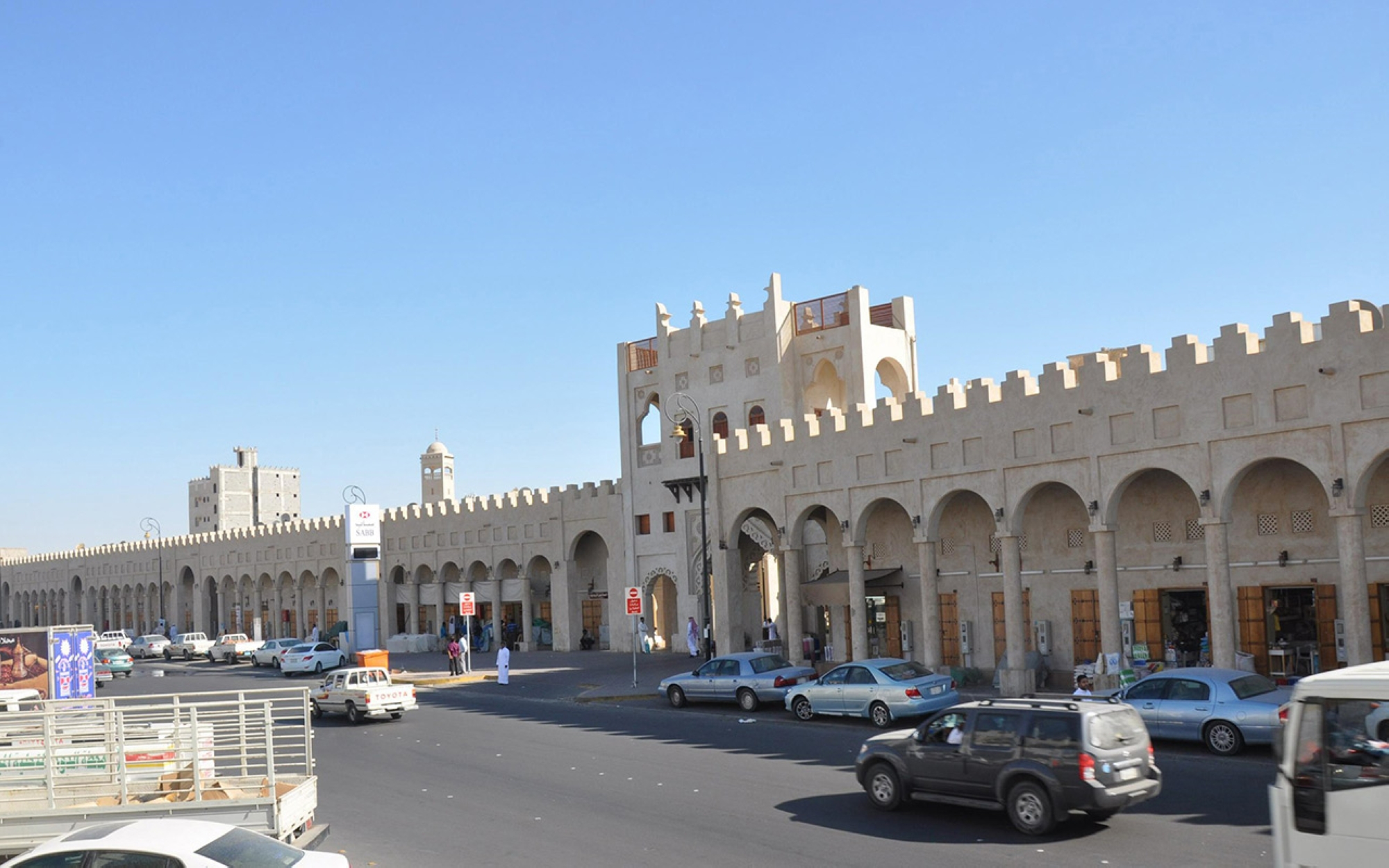
Here are the highlights of the traditional markets in the Eastern Province:
Souq Al Qaisariya in al-Ahsa is located in al-Rifaa neighborhood of al-Hofuf city. It was constructed in 1822. Travelers mentioned this market in their memoirs when passing through al-Ahsa in the nineteenth century, and it was also referred to in documents written during that era. Souq al-Qaysariya encompasses 422 shops. Their architectural designs reflect the heritage of the Eastern Province, with enclosed and roofed corridors characterized by their height. These designs provide comfort for visitors while also facilitating natural ventilation and lighting.
In 1916, Souq al-Qaysariya underwent renovation. Up until the 1920s, the market consisted of scattered shops. The market's design is distinguished by the presence of shop doors, known as Kabank, which are made up of three pieces. Two pieces serve as seats for the shop owner, upon which he places baskets made of palm fronds, used for storing rice and coffee. The third piece is lifted upwards and secured with a wooden rod on the wall. This specific type of door was a unique feature of Souq al-Qaysariya in al-Ahsa, distinct from other old markets in the Gulf region.
In addition to the presence of raised platforms within the shops, their flooring is elevated to prevent rainwater from entering. These platforms also serve as seating areas for customers and market visitors to closely inspect and examine the displayed goods with the intention to purchase. The architectural designs of the historical and heritage buildings were meticulously crafted, using materials like Kendal ceilings that were adorned with vibrant colors from plaster, providing protection against weather conditions and pests, allowing them to remain intact and endure for extended periods.
The market is characterized by its diverse activities, sectors, and offerings which include traditional crafts, brass work, leather goods, shoes, gold sales, watches, perfumes, fabrics, clothing, Bishts, traditional Mishlahs, men's and women's accessories, home furniture, electrical appliances, household utensils, and foodstuffs.
Wednesday Market in al-Ahsa is centrally located in the city of al-Mubarraz in al-Ahsa governorate. It spans an area of forty-five thousand m² and has a history that dates back over fifty years. It was inaugurated after its renovation in 2022, where shaded pathways, event squares, interactive fountains, vendor canopies, vegetation covers, and a pedestrian pathway adjacent to the market were established. Additionally, spots for food trucks, local artisan families, and provisions for people with disabilities were made.
Al-Ahsa also hosts other traditional markets, including the popular Sunday Market, located near the Qara Mountain in al-Ahsa, spanning an area of thirty-six thousand m². There's also the Thursday Market in the city of al-Hofuf, the Friday Market in the town of al-Taraf, and Monday Market in the city of al-Jafr.
Thursday Market in al-Qatif, which had its convention day changed to Saturday every week following the change in the weekend holiday, is situated on King Faisal Street, west of al-Qatif city. It is one of the most famous markets in the governorate, with its history stretching back over one hundred years. It attracts a large number of sellers from various villages within and outside Qatif, setting up stalls and canopies.
Vendors from al-Qatif showcase their agricultural and artisanal products in the market, which are crafted from palm fronds. These products include mats, baskets, fans, rattan carpets, traditional municipal ghee, rings, prayer beads, clothing, pottery, palm products, trees, fruits, vegetables, spices, honey, ghee, dates, antique copper utensils, women's jewelry, clothing, and handicrafts. The western side of the market features a section for pets, livestock, and birds, while the southern part offers fabrics, shoes, imported goods, and modern products.
The market is frequented by sellers and buyers from cities and governorates of the Eastern Province, such as Dammam, Dhahran, Khobar, and Ras Tanura, as well as citizens from the Gulf Arab countries. They are drawn to the variety of products available and the reasonable prices. Shoppers can also find stalls run by women selling palm products, handmade textiles, roses, and basil in the form of wreaths and necklaces
Souq al-Hub in Dammam is located in the central area of Dammam city. It was established in the mid-twentieth century, coinciding with the boom in oil production in the Eastern Province. The name Souq al-Hub is believed to have been derived from a street known as Street of al-Hub or the market of seeds and nuts, or because of the crafting of al-Hub, a type of pottery. However, another opinion suggests that young men and women, who were about to get married, used to frequent the market's fabric shops, clothing outlets, jewelry stores, gold traders, bridal dresses, and traditional Mishalah as they prepared for their wedding ceremonies.
The market is characterized by its densely packed commercial shops, kiosks, and diverse stalls set up along the market's sidewalks. Its offerings mainly revolve around food items, consumer goods, household necessities, men's and women's needs, gold trade, jewelry, gemstones, nuts, sweets, and more.
The market attracts shoppers, both citizens and residents, especially from the Asian communities. The market's vast squares and streets are crowded with visitors throughout the week, making it a melting pot where different Arab and foreign nationalities come together for shopping.
Popular Souq al-Nuayriyah was established around 1980, specializing in displaying traditional products and heritage collectibles. Some of these include Sadu, wicker, ghee, cottage cheese, and other necessities for desert dwellers. Over time, this market has transformed into a tourist attraction for the province and an economic hub for many productive families in Nuayriyah, especially for elderly women. The market houses around one hundred shops and attracts visitors from within Saudi Arabia and the Gulf Arab countries.
Popular Souq Hafar al-Batin is located in the heart of the city of Hafar al-Batin, this market stretches over an area of fifty thousand m². It showcases heritage items and consumers' needs, especially for desert dwellers, such as Bedouin tents, traditional tents, cloaks, camping necessities, hospitality items, and Arabian majlis. Some of these offerings are locally manufactured, especially copper products. Among the most prominent items in the market are desert truffles, which are abundantly displayed during their season, in addition to ghee, cottage cheese, yogurt, milk, herbs, and popular spices.
Related quizzes
Related articles

